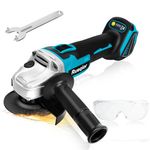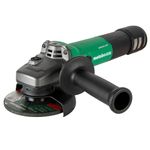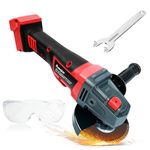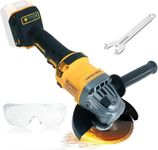10 bestAngle Grindersof December 2025
112M consumers helped this year.
1
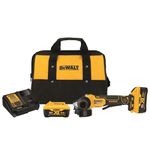
DEWALT 20V MAX* Angle Grinder Tool Kit, 4-1/2-Inch, Paddle Switch with Brake (DCG413R2)
DEWALT

9.8
2
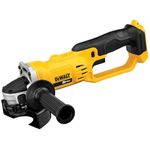
Dewalt DCG412B 20V MAX* Lithium Ion 4-1/2” grinder (Tool Only),Yellow
DEWALT

9.6
3
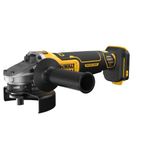
DEWALT 20V MAX XR Brushless Cordless 4-1/2-5 in. Angle Grinder (Tool Only) (DCG410B)
DEWALT

9.4
12% off
4
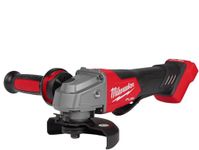
Milwaukee Electric - M18 Fuel 4-1/2/5 Grinder Paddle
Milwaukee

9.1
8% off
5
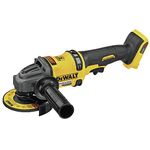
DEWALT FLEXVOLT 60V MAX* Angle Grinder with Kickback Brake, 4-1/2-Inch to 6-Inch, Tool Only (DCG418B)
DEWALT

8.9
OtherUp to 22% off
6
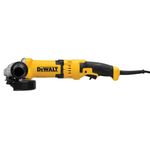
DEWALT Angle Grinder Tool, 4-1/2-Inch to 6-Inch, Trigger Switch (DWE43116)
DEWALT

8.6
7
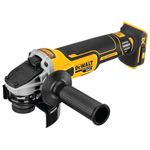
DEWALT 20V MAX* XR Angle Grinder with Kickback Brake, Slide Switch, 4-1/2-Inch, Tool Only (DCG405B)
DEWALT

8.3
8
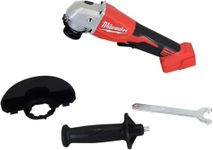
Milwaukee Electric - M18TRADE BRUSHLESS 4-1/2 / 5 Cut-Off Grinder
Milwaukee

8.0
9
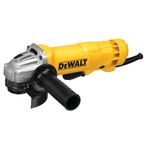
DEWALT Angle Grinder Tool, Paddle Switch, 4-1/2-Inch, 11-Amp (DWE402) , Black
DEWALT

7.7
10
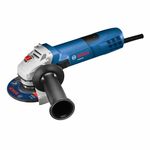
BOSCH 4-1/2 Inch Angle Grinder GWS8-45
Bosch

7.4
A Guide to Selecting the Best Angle Grinders
Choosing the right angle grinder can make your cutting, grinding, and polishing tasks much easier and safer. Angle grinders are versatile power tools used in metalworking, construction, and even home DIY projects. To find the best fit for your needs, it's important to understand the key specifications and how they relate to the type of work you plan to do. By focusing on the main features, you can ensure you get a tool that is powerful enough for your tasks, comfortable to use, and safe.
Disc Size
Disc size refers to the diameter of the grinding or cutting wheel that the angle grinder can accommodate. This is important because it determines the depth of cut and the size of the area you can work on at once. Common disc sizes are 4.5 inches, 5 inches, 7 inches, and 9 inches. Smaller discs (4.5-5 inches) are lighter and easier to handle, making them ideal for precision work or home use. Larger discs (7-9 inches) are better for heavy-duty tasks and cutting through thick materials. Choose a disc size based on the type of jobs you expect to do most often—smaller for detail and control, larger for speed and power.
Power (Wattage or Amperage)
Power is usually measured in watts (for corded models) or amps (for corded models in some regions), and it tells you how much work the grinder can do. Higher power means the tool can handle tougher materials and longer periods of use without overheating. Light-duty tasks like sharpening tools or cutting thin metal can be done with lower power (around 500-800 watts or 4-7 amps), while heavy-duty jobs like cutting concrete or thick steel require more power (1000+ watts or 8+ amps). Match the power to the intensity and frequency of your intended use.
Speed (RPM)
Speed is measured in revolutions per minute (RPM) and indicates how fast the disc spins. Higher RPMs allow for faster cutting and grinding, but can also increase the risk of overheating or losing control. Most angle grinders operate between 5,000 and 12,000 RPM. For general use, a mid-range speed is sufficient, but if you need to work quickly or on tough materials, a higher RPM may be beneficial. Some models offer variable speed, which gives you more control for different tasks.
Weight and Ergonomics
The weight and design of the angle grinder affect how comfortable and safe it is to use, especially for long periods. Lighter models are easier to maneuver and less tiring, making them suitable for overhead or detailed work. Heavier models may offer more stability for tough jobs but can be harder to handle. Look for features like adjustable handles, anti-vibration technology, and a comfortable grip to match your physical strength and the type of work you plan to do.
Safety Features
Safety features such as a spindle lock, adjustable guard, and soft start are important for protecting both the user and the tool. A spindle lock makes changing discs easier and safer, while an adjustable guard helps shield you from sparks and debris. Soft start gradually increases the speed, reducing the chance of the tool jerking when turned on. If you are new to angle grinders or plan to use them frequently, prioritize models with robust safety features.
Power Source (Corded vs. Cordless)
Angle grinders come in both corded (plug-in) and cordless (battery-powered) versions. Corded grinders provide consistent power and are better for long, demanding jobs, but require access to an electrical outlet. Cordless grinders offer more mobility and convenience, especially for outdoor or remote work, but are limited by battery life and may have less power. Choose based on where and how you plan to use the tool most often.
Best Reviews Guide Newsletter
Get exclusive articles, recommendations, shopping tips, and sales alerts
Sign up for our newsletter to receive weekly recommendations about seasonal and trendy products
Thank you for subscribing!
By submitting your email address you agree to our Terms and Conditions and Privacy Policy
